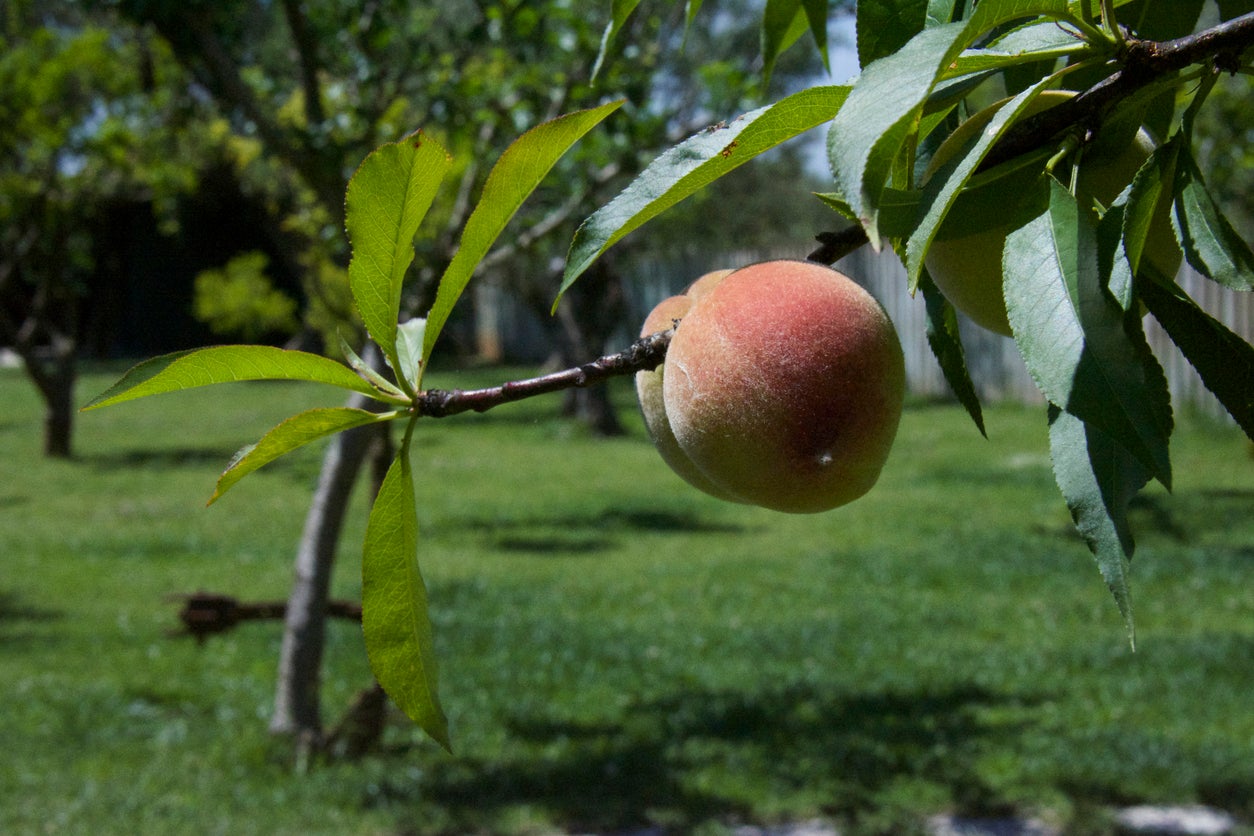Belle Of Georgia Peaches – Tips For Growing A Belle Of Georgia Peach Tree


If you want a peach that is the belle of the ball, try Belle of Georgia peaches. Gardeners in United States Department of Agriculture zones 5 to 8 should try growing a Belle of Georgia peach tree. The brilliant red flowers, multi-purpose fruits, and disease-resistant attributes of this plant make it an outstanding, edible landscape tree.
About Peach ‘Belle of Georgia’
Peaches are one of those fruits that are delicious fresh but also translate well to canned, grilled, and dessert recipes. The peach ‘Belle of Georgia’ is a blushed freestone with white, succulent flesh. As an added bonus, the tree is self-fertile and doesn't require a pollination partner to crop. It does, however, need at least 800 chilling hours for a reliable harvest.
Not all peach trees are created equal. The Belle of Georgia peach tree is resistant to bacterial leaf spot and brown rot. Standard trees attain a height of 25 feet (7.5 m.), but there is a dwarf variety that will only get 10 feet (3 m.) maximum. It is a fast-growing tree that may produce a fruit crop as early as age three.
Belle of Georgia peaches are large and have a rosy blush on their fuzzy skins. The firm-fleshed fruits are ready to harvest in late summer and store well.
Growing a Belle of Georgia Peach
Plant the tree in well-draining, loamy to sandy soil with plenty of organic amendment incorporated. Provide the tree with full sun, at least 6 hours minimum of bright light. Plant standard trees a minimum of 20 feet (6 m.) apart and provide dwarf forms 10 feet (3 m.) of spacing.
Soak bare-root trees in a bucket of water for two hours prior to planting. Dig a hole twice as wide and deep as the roots and build a little hill of loose soil at the bottom. Spread the roots out over the hill and to the edges of the hole. Fill in and pack soil around the roots, watering deeply after. If necessary, stake the little tree to help it grow straight.
Belle of Georgia Care
Water newly installed trees weekly. Once established, water trees deeply but wait until the surface of the soil has dried before further irrigation.
Sign up for the Gardening Know How newsletter today and receive a free copy of our e-book "How to Grow Delicious Tomatoes".
In the first dormant season, prune to establish a central leader and 4 to 5 scaffold branches. In the second season, remove any new shoots, leaving the older twig growth. By the third season, pruning is done to remove waterspouts, and crossing or damaged stems. After a first crop, prune the peach annually to remove a third of the fruited wood.
Once trees start bearing fruit, fertilize in early spring with a high nitrogen organic feed.

Bonnie Grant is a professional landscaper with a Certification in Urban Gardening. She has been gardening and writing for 15 years. A former professional chef, she has a passion for edible landscaping.